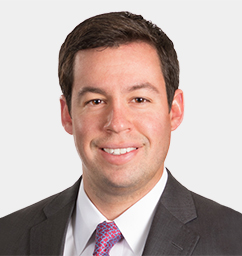Understanding bond ETF liquidity
Fixed-income ETFs are popular with investors, but some common myths and misunderstandings about bond ETF liquidity continue to persist. We take a closer look at why it’s so important to consider more than just an ETF’s trading volume or assets when evaluating the liquidity of individual ETFs.

Over 20 years of bond ETF history
The first U.S. fixed-income ETFs were introduced in 2002, nearly a decade after the launch of the first equity ETF in 1993. Although most ETF assets today are in equity-focused funds, bond ETFs are gaining traction. Investors now have more fixed-income ETFs to choose from than ever before, including a growing number of active ETFs that offer the potential for higher yields and improved risk management.
Fixed-income ETFs have successfully weathered several big storms: the global financial crisis, the 2013 taper tantrum, the COVID-19 panic, and the biggest drawdown in bond market history.
Despite their established track record, myths about bond ETF liquidity persist. This confusion often arises from the bond market generally being more illiquid than the equity market. To help ETF investors better understand what they own, we aim to clarify how bond ETF liquidity works in practice.
Bond ETF liquidity: look beyond trading volume
Investors are wise to focus on liquidity, whether it’s an ETF, an individual security, or virtually any asset. Liquidity—the ability to buy or sell a security quickly and easily—is an important factor to understand and to monitor with any investment.
When assessing the liquidity of individual stocks or securities, most investors start by looking at trading volume. Large blue chip companies, for example, are some of the most liquid securities in the world, with millions of shares trading daily; small companies, with far less trading volume, are less so.
When it comes to ETFs, investors can easily check on an individual ETF’s average daily trading volume, typically measured in shares traded. This is known as the secondary market for ETFs and is how most individual investors buy and sell ETFs.
However, it's important to remember that trading volume alone doesn't fully reflect an ETF's true liquidity. An ETF's liquidity is also determined by the liquidity of its underlying assets, whether it holds stocks or bonds.
Bond ETF creation and redemption
The ETF structure is centered on the creation/redemption process. Brokers known as authorized participants (APs) create or redeem ETF shares based on changes in demand and help to keep the market price close to its net asset value (NAV). This is known as the primary market for ETFs.
When the securities the ETF invests in are liquid, it’s easier for APs to create and redeem ETF shares. In other words, the liquidity of an ETF’s underlying holdings drives the ability of APs to create and redeem shares, providing liquidity to potential ETF shareholders regardless of the ETF’s daily trading volume.
This means that bond ETFs with relatively little trading volume can still trade at tight spreads if they invest in liquid markets such as U.S. Treasury bonds, investment-grade corporate debt, and mortgage-backed securities.
What happens if liquidity dries up in the bond market?
Bond ETFs have also shown resilience during periods of lower liquidity in the fixed-income market. A notable example of this occurred during the COVID-19-induced market volatility in March 2020. As bond markets experienced a significant drop in liquidity due to heightened uncertainty and many buyers stepping back, bond ETFs continued to trade efficiently.
During this time, bond ETFs served as important tools for price discovery, providing insight into investor sentiment even as direct trading of the underlying bonds became difficult. By offering a clearer picture of market valuations, ETFs helped contribute to market stability, allowing investors to manage their portfolios effectively despite these liquidity challenges.
This was achieved through the role of APs in the primary market, who facilitated the creation and redemption of ETF shares, as well as increased trading activity in the secondary market. These factors highlight the importance of both the primary and secondary market in maintaining the overall liquidity of bond ETFs.
How to do your homework on bond ETF liquidity
When assessing a bond ETF's liquidity, investors should consider several key factors, including an ETF's trading volume and bid/ask spreads, along with how the fund’s market price aligns with its NAV to identify any premiums or discounts. Investors should also evaluate the liquidity of the ETF’s underlying bonds.
By considering these factors, investors can gain a clearer understanding of a bond ETF's liquidity when buying and selling. As assets in fixed-income ETFs continue to grow, understanding liquidity becomes increasingly important and can help investors make informed decisions in a rapidly expanding marketplace.
Important disclosures
Investing involves risks, including the potential loss of principal. Fixed-income investments are subject to interest-rate and credit risk; their value will normally decline as interest rates rise or if an issuer is unable or unwilling to make principal or interest payments.
The shares are not individually redeemable and owners of the shares may acquire those shares from the ETF and tender those shares for redemption to the ETF in creation units only.
The views presented are those of the author(s) and are subject to change. There is no guarantee that any investment strategy illustrated will be successful or achieve any particular level of results. This is for informational purposes only and is not intended to be, nor shall it be interpreted or construed as, a recommendation or providing advice, impartial or otherwise, regarding any security, mutual fund, ETF, sector, or index. Investors should consult with their financial professional before making any investment decisions. Past performance does not guarantee future results.
JHS-704169-2025-03-14






